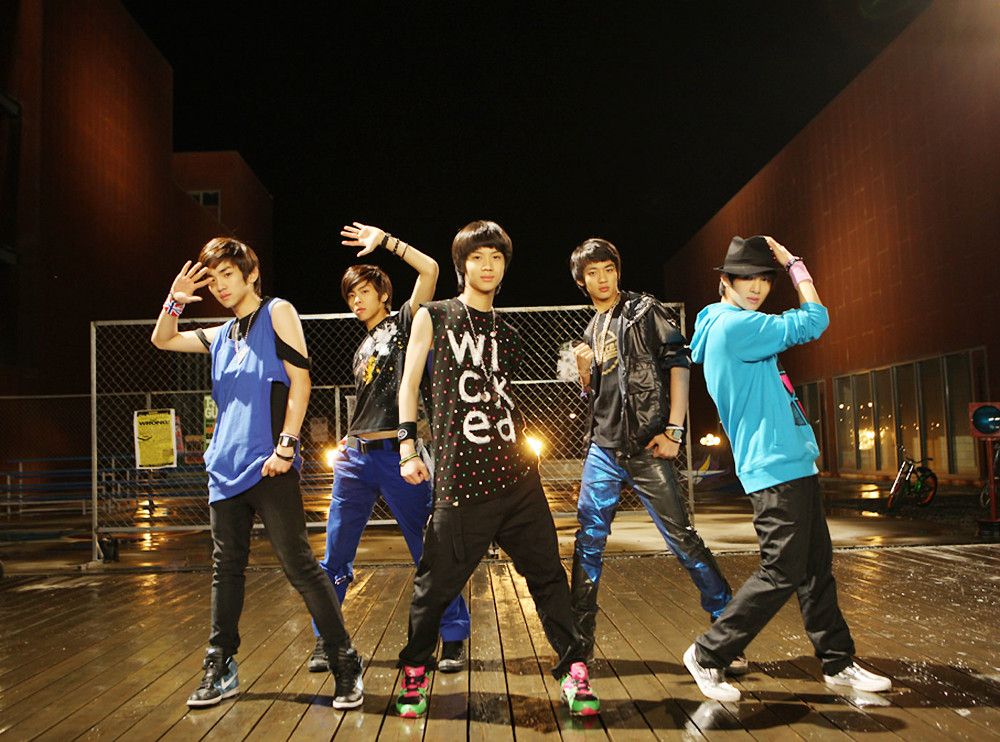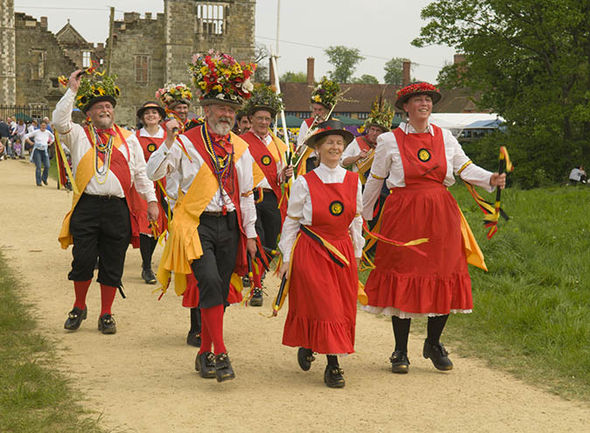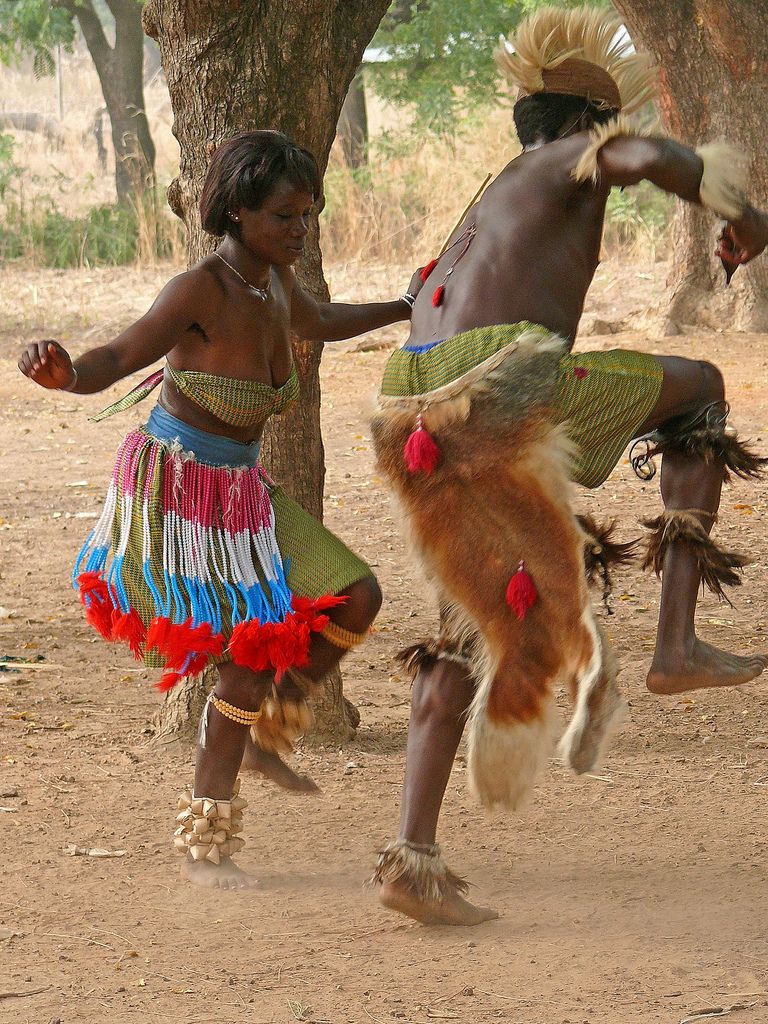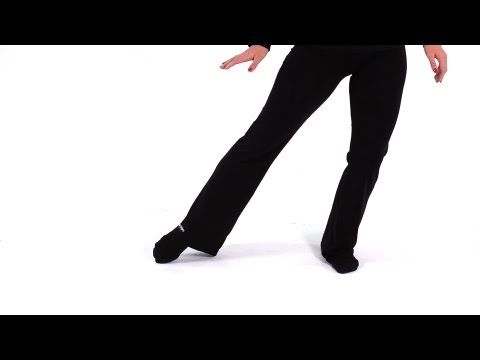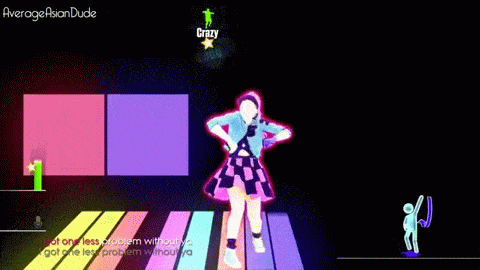How to dance the quickstep
Quickstep Dance Lessons Mesa AZ - Quickstep Dance Classes Mesa Gilbert
Learn all about the Quickstep!
What is the Quickstep?
The quickstep is a popular ballroom dance that originated in the Charleston and the foxtrot crazes of the 1920s. Faster than the foxtrot, it’s a relatively easy dance to learn but challenging to master, particularly as you progress through the fundamentals. It requires a lot of energy and the ability to dance lightly and gracefully on your feet; the best quickstep dancers often appear as if their feet barely touch the ground.
History of the Quickstep
The quickstep developed in the golden age of the Charleston dance craze of the 1920s. British dancers in England began combining the smooth steps of the Charleston — minus the energetic kicks — with the rhythm and flow of the Foxtrot, which was also enormously popular at the time. For many dancers, the foxtrot proved too slow in tempo, however, and as the swinging big bands began to play a faster beat, dancers followed suit and created what became known as the Quick Foxtrot. Eventually, it became known as the “Quickstep” and evolved into its own distinctive dance style.
Although the quickstep was heavily influenced by the jazz culture of the period, it owes some of its movements to the equally popular Afro-Cuban and Latino dance crazes of the 1920s and 1930s. Its rapid tempo and quick changes borrowed from the tango and the rumba, while the gliding, elegant “walking” steps are a nod to its origins in the foxtrot. While it relies heavily on forms, the quickstep also easily lends itself to improvisation so that advanced students and professionals who master the fundamentals can perform beautifully in competitions as well as on the dance floor.
How to Dance the Quickstep/Basic Steps
The quickstep is generally performed on 4/4 time. True to its name, the quickstep does require relatively fast movements, but the basic steps are easy to learn. Keep in mind the following as you learn to dance the quickstep:
- Both the leader and follower should maintain an upright posture throughout the dance.

- The basic rhythm is slow-quick-quick.
- As you become more confident in dancing the quickstep, practice how to fluidly transition from one step to the next at a beat that will make it seem as if you’re floating just off the ground.
- Take your time and build your endurance. It’s not called the quickstep for nothing! Master the fundamentals so that you can learn to improvise with ease and without tiring too quickly.
The basic quickstep is as follows:
- Begin in a closed position.
- Step forward with your right foot. (slow)
- Step to the left with your left foot, then slide your right foot to close with your left foot. (quick)
- Step to the left again with your left foot. (quick)
- Step backward with your right foot. (slow)
- Step to the left with your left foot, then slide your right foot to close with your left foot. (quick)
- Step to the left with your left foot. (quick)
Great Quickstep Songs
“Mack the Knife” – Bobby Darin
“Charade” – Bobby Darin
“Down with Love” – Michael Buble and Holly Palmer
“I Won’t Dance” – Ella Fitzgerald and Louis Armstrong
“Suddenly I See” – KT Tunstall
Quickstep in the Movies
“Shall We Dance” (1996) (original Japanese)
“Shall We Dance” (2004) (American remake)
Learn other dance styles!
Quickstep Dance Lessons Online - For beginners
Developed during the World War I in suburban New York, initially performed by Caribbean and African dancers. It eventually made its debut on the stage of American music-hall and immediately became popular in the ballrooms. The Charleston had a lot of influence on the development of Quickstep dance which is noted for its quick and lite foot movements. Based on a combination of straight and rotary movements this dance requires good control of posture and stamina. You can learn with our dance lessons online.
It eventually made its debut on the stage of American music-hall and immediately became popular in the ballrooms. The Charleston had a lot of influence on the development of Quickstep dance which is noted for its quick and lite foot movements. Based on a combination of straight and rotary movements this dance requires good control of posture and stamina. You can learn with our dance lessons online.
Quickstep basic step:
Video Transcript:
So the basic step to the Quickstep. Now it’s got a big long name. It’s called the Progressive Chasse and Quarter Turn or Quarter Turn and Progressive Chasse but let’s just call it the basic step. We’re going to dance it for you first. We’re going to move across the camera and slow, slow, quick, quick – slow, slow, quick, quick – slow, slow, quick, quick – slow, slow, quick, quick – slow, slow, quick, quick, slow.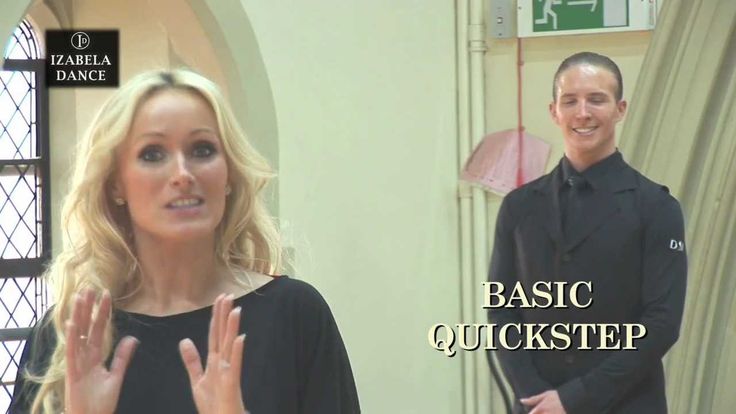 So we begin by demonstrating and teaching the steps separately.
So we begin by demonstrating and teaching the steps separately.
The man’s step: I will now describe to you the man’s step for the basic Quickstep. Everything in the standard dances: the Waltz, Tango, Foxtrot, Quickstep, Viennese Waltz, is based on directions around the ballroom. So here we have a direction called the “diagonal to wall.” This is our line of dance, where we are going when we are dancing, and this is diagonal wall – about 45-degrees. Basic step starting with the man’s left foot – we walk forward – left, walk forward, right.
Then we dance a series of steps, side-together-side called “chasse” and we do these steps up on the toes – quick, quick, slow. And you’ll notice I made a little quarter-turn to the right. Then we have the progressive chasse part – back right foot, slow and chasse, quick, quick, slow. And I continue with a walk and a chasse step, a walk and a chasse step, a walk, chasse step, a walk, chasse step. At the very beginning when I start to dance, I will dance two walks. Slow, slow, quick, quick, slow, that will be the only time I will dance two walks. After that, its one walk and a chasse – one walk forward, right foot in front of left foot, and a chasse, and so on and so on.
Slow, slow, quick, quick, slow, that will be the only time I will dance two walks. After that, its one walk and a chasse – one walk forward, right foot in front of left foot, and a chasse, and so on and so on.
Each time I do the chasse I make a small, I repeat, small turn – slow, quick, quick – slow, slow, quick, quick, slow. And from the close up on my feet, you would be able to see the rise and fall, the up and down use of heels and toes to get the nice hovering effect.
Ladies’ step: So she begins by standing on her left foot and starting back on her right foot and dance for two walks. And slow, slow – now she will go up to her toes and dance the chasse to the side – quick, quick, slow. Notice she’s coming forward on the last step of the chasse and coming down, toe-heel, soft landing on that last step. She also made a little turn to the right. So, now she goes forward – left foot, slow – on the heel, up on the toes, dance the chasse – quick, quick, slow – and repeat the basic – a walk and a chasse – a walk and a chasse – a walk and a chasse. She will also show you that the only time she takes two walks is when she starts dancing.
She will also show you that the only time she takes two walks is when she starts dancing.
This is called the “preparation walk.” She goes a walk, walk, and chasse step, one walk and a chasse step, a walk and a chasse step, a walk and a chasse step. Each time I say the word “chasse” it means a series of three little steps that can be danced sideways, forward or back. You will learn more about this as we continue. So dancing the basic step I have to show you one important thing – slow, slow, quick, quick, slow. When we did that, the man went between the lady’s feet – slow, slow, quick, quick, – slow, slow, quick, quick, slow. But as we continue, the man’s right foot — [fades out]
How to learn to dance quickstep - Vsetantsi
Contents
- 1 Quickstep - learning to dance
- 2 Video:
- 3 History of Quickstep
- 4 Trying to count Quickstep.
- 5 History and nature of dance Jayv
- 6 JIV for beginners for adults
Quickstep - Learning to dance
Video:
Kvikstepstvo dance
KVICSTOMS. lightness and mobility.
Quickstep is very rich in variations, its elements are considered the basis of standard dances.
Fast Foxtrot very effectively combines the game character of lightning-fast jumps, kicks, turns, tilts, poses and soft, “smooth” creeping plasticity of the dance couple's movement.
Its study is considered the "abc" of ballroom dancing.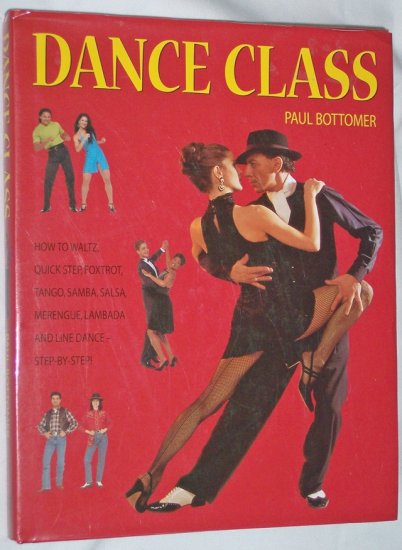
Quickstep development history
Quickstep is the child of Slow Foxtrot. Quickstep was born under the following circumstances: musicians in the 20s of the last century began to play the Foxtrot faster and couples could not perform the traditional “pas” of the Slow Foxtrot at this pace.
Then the party entertainers, in order to avoid unnecessary indignation among the dancers, began to announce the Foxtrot at a fast pace as "Quickstep".
Dance began to acquire new elements, movements, gaining popularity. Quickstep absorbed jumps, kicks and other original dance moves - Shimmy, Charleston, Black Button.
And today the Quickstep is a dance of the European Ballroom Dancing program, performed at competitions, starting from the Hobby class. Time signature - 4/4, tempo - 50 beats per minute.
Quickstep trying to count.
Quickstep dance for 4 counts. Being a non-waltz form of dance, the Quickstep varies the movements of the "Slow" and "Fast" counts. The fast foxtrot is similar to the slow waltz in terms of lifting movements, so the emphasis is on beats 1 and 3 of the measure.
The fast foxtrot is similar to the slow waltz in terms of lifting movements, so the emphasis is on beats 1 and 3 of the measure.
Video lesson "Quickstep training" will allow you to improve your dancing skills in this direction.
This dance has an incredibly lively rhythm that requires mobility and lightness from the performer. The quickstep is rich in variations, and its many elements are considered the basis for standard dances. Thanks to professional choreographers, you can easily learn how to dance a bright and incendiary quickstep.
Video lesson "Teaching Quickstep" is a wonderful guide that will introduce everyone to one of the most dynamic and fastest dances in the European program - quickstep. In this dance, there is no conflict of tango or romance of the waltz, everything here is quite carefree, fun and harmonious. Quickstep is a sparkling and lively dance that includes elements of jumps and jumps, which creates a beautiful spectacular picture.
Quick step dance - video training from which you will learn how to dance this dance correctly.
Regularly practicing with our video training, you will soon master all the dance techniques. Quick step is translated as a quick step, which means you will be required to have dynamics and a sense of rhythm. Do not worry, all this will come to you with experience!
Watch the training video "Quick step dance" Learn quickly and efficiently with our lessons!
Turning technique will be especially important. You will also be taught the correct movements. In order not to be constrained, our teachers will show you a couple of tricks for liberation, and it really helps!
A wonderful video lesson "Quickstep - how to dance" will teach everyone the basics, from the first steps to complex techniques. Today quickstep is a very varied dance, many of its elements have become the main standard dances. The dance requires exceptional mobility and lightness from the dancer in order to match the very fast quickstep rhythm.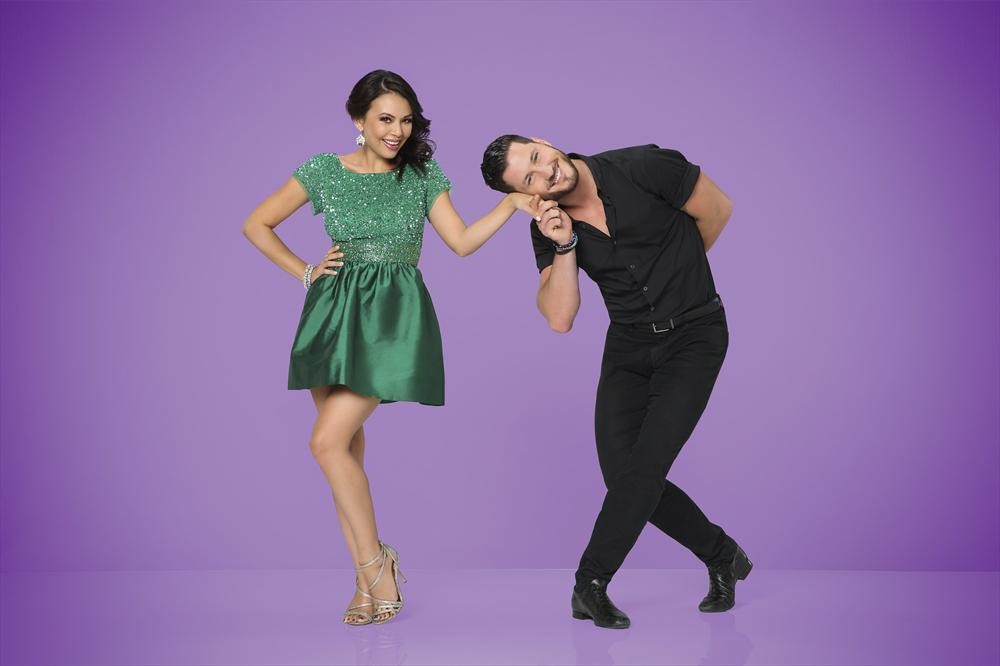
Quickstep training is a great way to learn how to dance from famous choreographers right at home. I will tell you step by step and show you all the movements so that you have time to repeat.
QuickstepQuickstep is a driving, light, “airy” dance that will not leave anyone indifferent.
Quickstep is a type of foxtrot. Dance originated in the United States in the 20s of the last century. In 1923, in the UK, the performance of the Paul Wightman Orchestra made a splash and completely changed the idea of Europeans about the running and popular movements of that time. The quickstep replaced the foxtrot as a more active and dynamic substitute.
It is interesting that in the cultural institutions of Europe one could find information that the foxtrot is performed there at a dynamic, accelerated pace. The basis for the new dance direction was the modernized movements of the shimmy, Charleston, foxtrot and blackbottom. The main movements in the dance are highways, progressive steps, tipsy, kicks, turns.
Oddly enough, dance was considered forbidden in elite institutions for a long time, although it was immediately appreciated by dancers all over the world. Features of the dance steps Today, the movements generally accepted about a hundred years ago differ significantly compared to modern ones. For a whole century, the dance has been improved in every possible way, supplemented with new movements and a variety of musical accompaniment. They dance 200 beats per minute, jumps, turns, chasse remained unchanged.
There are a great many dance schools that include quickstep in their programs, since this type of dance has long become a classic. Everyone can master the art of quickstep without any problems, with great, sincere desire and certain efforts. At Casablanca dance school you can learn how to skillfully dance quickstep, experienced teachers will be able to make a worthy dancer out of anyone. You will acquire new knowledge in plasticity and movements, or you will bring the existing ones to perfection.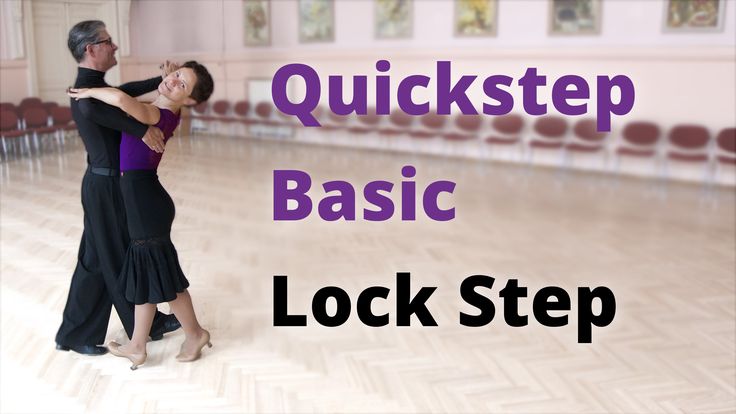 Girls: It is recommended to come to class in dresses or a skirt, shoes.
Girls: It is recommended to come to class in dresses or a skirt, shoes.
It is desirable that the shoes hold the foot. Men: Jeans or trousers, shoes preferably with leather soles or jazz shoes.
Quickstep lessons. Dance technique.
Quarter turn to the right
I.p. - partner facing, partner with her back diagonally to the wall, legs in the 6th p. , partner facing diagonally to the center.
Partner
Partner
When the partner performs a heel turn to the count of "M" step 2, the lady performs two quick "B" steps 2 and 3.
Quarter turns can be performed in series.
Natural (right) turn
Right turn can be used to overcome dance hall corners. But a lot of dancers start their variations with the right turn.
This figure consists of six steps in a gradual turn to the right and is divided into two halves.
Partner
The first half of
The second half
Partner
The first half
The second half
Right rotation (Hezitishna)
is a common variation of natural (right turn that can be performed closer to the beginning or middle of the wall of the wall of the wall and which goes well with the other patterns described on our website below
The first half of a right turn with a delay (hesitation) is performed similarly to the first three steps of a natural (right) turn.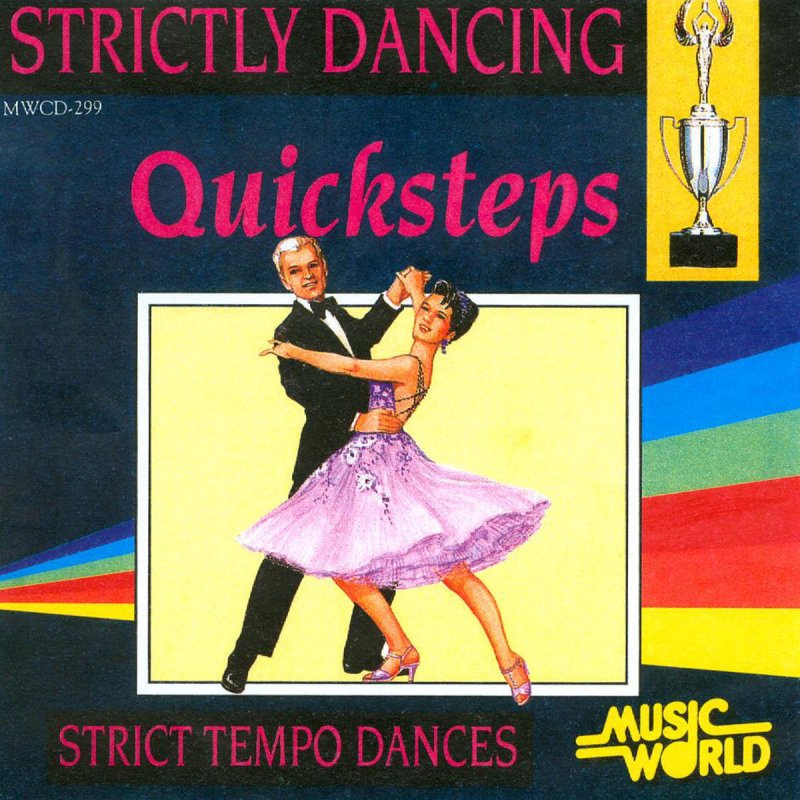 0003
0003
Steps 1-3 follow the right turn steps 1-3 described.
Partner
Partner
This movement can be continued with a forward chasse to the right or a reverse (left) chasse-turn.
Jive
Jive is the most energetic and incendiary of all ballroom dances, fundamentally different in technique and character from others. During the dance, partners constantly give maximum energy to each other, share with the audience the feeling of celebration, fun and carelessness.
Jive moves include elements of rock and roll and jitterbug. The dance conquers with cheerfulness and incredible energy, mischief and slight mockery. In our dance school you can learn how to perform jive in the best rock and roll traditions.
History and character of jive dance
Jive originated in the late 19th century among African Americans in the North of America. Constantly changing and absorbing all the best dance traditions, jive was brought to Europe as a swing dance.
Jive movements include swing elements of active swinging of the body, step steps, inimitable boogie-woogie jumps. The pace of the dance is 44 beats per minute, all movements are performed quickly, easily and with genuine gaiety. A distinctive feature of jive is emotionality and contagious positive.
Jive for Beginners Adults
Jive requires a certain amount of physical preparation and a preliminary thorough warm-up to warm up the muscles. Due to the large number of jumps and throws, the jive was performed exclusively in competitions for a long time, but in its modern form it has become a popular dance and club option available to beginners.
By learning jive, you can always be in excellent physical shape, learn to relax, get distracted from pressing problems and get a powerful charge of exceptionally positive emotions, because jive captures partners completely and irrevocably. Contact our club, and we will be happy to teach you the audacity, looseness and incendiary jive.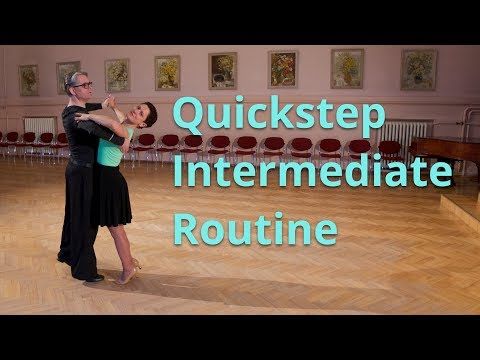
Sources:
http://mirtancev.ru/uroki-kvikstepa-texnika-tanca-chast-pervaya.html
https://labocadance.ru/destinations/ballroom/dzhajv/
https://www.vestadance.ru/dance-ballroom-quickstep.html
http://video-dance.ru/balnie/quickstep/
http://casa.dance/kvikstep/
list of valid figures, sorted by class
References:
Quikstep, E-class
| NO P/p | English name | Russian name | Guoward, Artis 2003 | ||
| CENTER 905 20020 | |||||
| 2. | Quarter Turn to Left (Heel Pivot) | Quarter Turn to Left (Heel Pivot) | Howard | ||
| Hall Corner Right Turn (Right Turn) | Howard | ||||
| 4. | Natural Turn (as amended [4]) (see note) ]) | ||||
5. | Natural Pivot Turn | Right beer rotation | HOWARD | ||
| Natural PIVOT [4] ( NATURAL PIVOT [4]0635 (as amended [4], see Note) | rotary Lock to the right (in the editorial office [4]) | ||||
| 54. | Curved Feather | Curled feather | 9021 .Curved Feather from PP | Curled feather from PP | |
| 56. | Natural FALLAWAY TURN [4] | |
 For the third degree of complexity, the execution of this figure is also allowed, ending in PP.
For the third degree of complexity, the execution of this figure is also allowed, ending in PP. 

